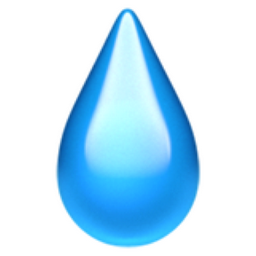
Double-click on the sample composition in the Finder, and Quartz Composer opens in Edit mode. If you want to use an example that needs editing, such as Slide.qtz from the Parametrizable Compositions folder, you’ll need to do a bit of work within Quartz Composer itself. If you place the Quartz Composer animation on a slide with photo cutouts, you can even put the animation behind the cutout (using Arrange: Send Backward), for some visually interesting effects. When you enter the slide-show mode, the animation comes to life. Add a drop shadow, adjust its transparency, and even scale it (though you may see some jagged images when you greatly increase the size of an animation). You can treat the animation just as you would any other Keynote object. Select one of these, and Keynote will insert it into the current slide. Many of the subfolders here contain ready-to-use examples, such as Cells.qtz and Star Shine.qtz (located in the Core Image Compositions folder). In Keynote’s Choose dialog box, navigate to /Developer/Examples/Quartz Composer. The simplest way to start is to use some of the Apple-provided examples you’ll find in the Developer folder. Just go to Keynote’s Insert: Choose menu to import a QTZ (Quartz Composer) file. This app is tricky to use, but you don’t have to know much to use it with Keynote-you may not even have to open it. Then open Quartz Composer (/Developer/Applications/Graphics Tools).
#Dropjpg for mac hints free
With help from one of the free Developer tools on your Tiger installation CD, you can bring the background of any given slide to life. Here’s a trick for Tiger users who work with Keynote 2 (as part of Press tab to select items on the desktop, one by one, in alphabetical order (numbers precede letters).įalse, and then relaunch the Finder again.Īnimate Keynote slides with Quartz Composer If you’ve chosen to hide hard drives from the desktop, then the desktop will be active with nothing selected. If you have your Finder preferences set to show hard disks on the desktop, this will activate the desktop with your boot disk selected. From any Finder window, you can activate the desktop by pressing Command-shift-up arrow. Here’s a quick keyboard shortcut you may have missed. Select the desktop from any Finder window Select the Change Picture option and set your time interval, and you’re done. Within the iPhoto Library folder, highlight the iPhoto Selection folder and click on Choose. Pictures/iPhoto Library) in the dialog box that appears.

Instead, you must select Choose Folder from the folder list, and then navigate to your iPhoto Library folder (/ If you have two monitors and want the images to appear on the secondary one (the one that doesn’t contain a menu bar), you won’t find the iPhoto Selection option in the Desktop & Screen Saver preference pane on the second screen. If you have only one monitor hooked up to your Mac, select the Change Picture option and specify the desired interval.

The Desktop section of the Desktop & Screen Saver preference pane automatically opens, with iPhoto Selection highlighted. This subfolder holds aliases of all the images in your album. When you do, iPhoto creates a new subfolder (called iPhoto Selection) in the iPhoto Library folder. Click on the Desktop button in the iPhoto toolbar. Next, click on the album in the Source list and choose Edit: Select All (or press Command-A) to select all the images in that album. Here’s the easy workaround: in iPhoto, create an album (File: New Album) and fill it with the pictures you want to display on your desktop.

But the Change Picture option is always grayed out for albums (smart and standard) created in iPhoto 5 (as part of

Once you selected the Change Picture option and set your desired interval, you had a changing desktop picture that revealed the album’s images one by one. Prior to version 5, you could use iPhoto to createĭesktop picture albums: You could create a new album in iPhoto, go to the Desktop tab of the Desktop & Screen Saver preference pane, and choose that album from the list of iPhoto albums.


 0 kommentar(er)
0 kommentar(er)
